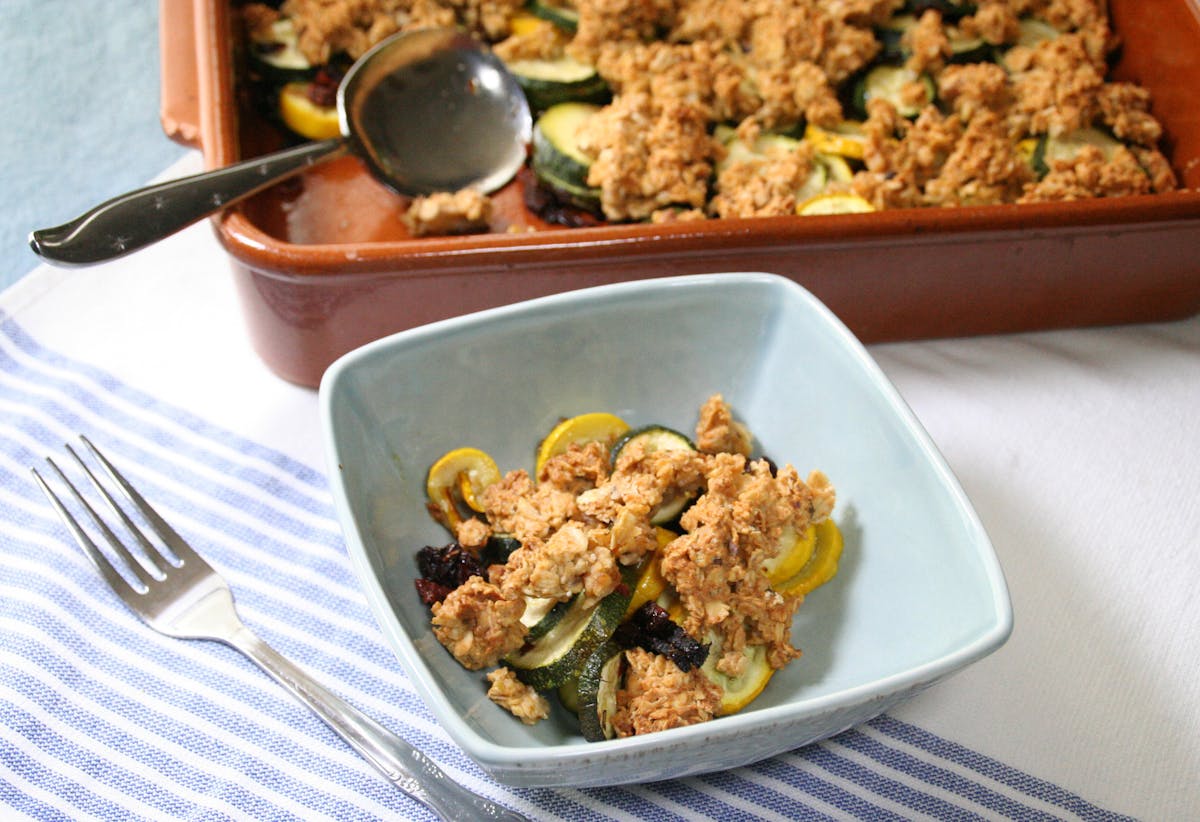It was about 30 years ago when I convinced my brand-new husband to collaborate on our first vegetable garden. With more energy than gardening expertise, we enthusiastically chunked out the thick sod at the back of our rented yard and turned the earth, planting enough food for several families. He built epic trellises for the green beans, while I pounded tall stakes in the ground for tomato plants. With dirt under our fingernails and a case of canning jars in the pantry, we had high hopes. The garden seemed as full of promise as our new life together.
Like all first gardens, ours was full of disasters, or shall we call them "learning opportunities." The heirloom variety of winter squash barely produced a single fruit, and the epic green beans were decimated by bean beetles. But one row had vigor aplenty for the whole garden.
We had planted zucchini.
Zucchini is famous for producing, and produce it did. The tomatoes did, too, so my canning jars were soon full of a zucchini ratatouille. The wide leaves seemed to conspire to hide developing baby squash, allowing them to swell to Hindenburg proportions without detection.
We never sunk to dropping the fat squashes off on doorsteps, preferring to look our friends in the eye as we mixed a few zukes in with the fat beefsteak tomatoes we shared. Stuffed, grilled or puréed into soup, the zucchini was a running theme in my dinner parties that season. Luckily, we ran with a veg-eating crowd. And my neighbor thoughtfully paid me back in zucchini bread.
It's almost a curse that zucchini grows so well, causing many people to shrug it off, as if it were too common to be good. Those prolific plants are surprisingly nutritious, and pack plenty of fiber.
In the intervening years, I've grown many a cucurbita pepo (the genus name) and found plenty more ways to serve it. The main thing to know when cooking zucchini is that it has a high moisture content. Like mushrooms, zucchini will happily collapse and add its juices to the pan, depending on how you handle it.
Higher heat and brief cooking times will help sear the veggie, or you can go the opposite route and sauté it low and slow, then raise the heat to reduce the effusion of liquids to a syrupy sauce. For a zucchini fritter, or a breaded zucchini slice, you can always try salting the shreds or slices in a colander, and letting some liquids drain away, then pat dry and proceed.
Seek out the youngest, freshest zucchini, which has less water and smaller seeds. The deep green skin should be tight, and the vegetable snappingly crisp. They actually squeak when they rub together.
The only time I look for a larger zucchini is when I am making zucchini noodles. My Spiralizer can make yards of tender noodles from a zuke up to 3 inches wide. To serve it with a warm sauce, I always heat the sauce and add the raw "noodles" right before serving, stirring briefly over the heat just to warm them. For zucchini salads, I like to use a peeler or a mandoline to shave thin strips, then toss them in dressing just before serving. Chunks of zucchini are a nice addition to Italian marinated vegetables, too.
We think of zucchini as an Italian veggie, and it's perfectly appropriate to add it to your veggie spaghetti sauce and minestrone. But it's also remarkably similar to some Asian vegetables, such as Chinese fuzzy melon and opo, or bottle gourd. Go ahead and stir-fry it or use it in Asian style soups, as a stand-in for exotic squashes.
That first garden, and our life since, had its ups and downs. It taught me to garden with someone you can count on when you are in the weeds, to stay flexible in the face of challenges, and to be unafraid to get dirty in the pursuit of a higher goal.
That, and to share what you don't need, and the universe will pay you back in zucchini bread.
Robin Asbell has written six cookbooks, including "The New Whole Grains Cookbook" and "Gluten-Free Pasta." She teaches cooking in the Twin Cities.

Minnesota music legend Spider John Koerner dies at 85
Sean 'Diddy' Combs abuse allegations: A timeline of key events

Minnesota music legend Spider John Koerner, who influenced Dylan and Raitt, dies at 85
The stuff that Coppola's dreams are made of: The director on building 'Megalopolis'


